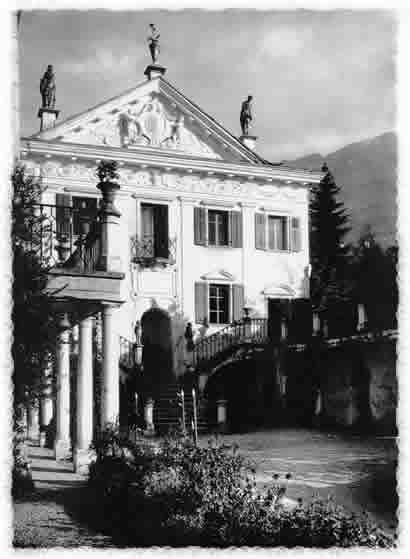
QCD-TNT-II - (other qcd conferences)
5-9 September 2011
Trento, Italy
published February 20, 2012
Trento, Italy
published February 20, 2012
QCD-TNT-II will address critically the hard problems that remain unsolved in QCD, connecting non-perturbative continuum and lattice ideas in new and original ways. The general themes of the workshop include this time the understanding confinement, chiral symmetry breakdown, and the nature of topological charge, for all of which there is more than one plausible scenario. All these phenomena are non-perturbative and probe the strongly-coupled infrared region of QCD. We look for ways to reconcile apparent discrepancies in various schools of thought, with an emphasis on enforcing gauge invariance, and for lattice simulations in specially-constructed scenarios that can accurately compare and contrast the proposed non-perturbative mechanisms of QCD.

| Table of contents |
|---|
|
Gluon mass through ghost synergy
|
|
Ghost-gluon and ghost-quark bound states and their role in BRST quartets
|
|
On the infrared behaviour of QCD Green functions in the Maximally Abelian gauge
|
|
Regge-like quark-antiquark excitations in the effective-action formalism
|
|
The dynamical equation of the effective gluon mass
|
|
AdS/QCD and Light-Front Holography: A Novel Approach to Non-Perturbative QCD
|
|
Tetraquark and the flux tube recombination
|
|
Renormalization group invariance in the Pinch Technique
|
|
The role of the running coupling constant in the unveiling of the hadronic structure
|
|
Quark masses in two-flavor QCD
|
|
Ghost dissection
|
|
Mass spectra and Regge Trajectories of Heavy Mesons and Baryons
|
|
Baryon form factors from Dyson-Schwinger equations
|
|
Applications of Dyson-Schwinger equations to heavy flavours
|
|
On the zero-mass limit for nonabelian gauge theories
|
|
Yang-Mills Theory at Non-Vanishing Temperature
|
|
Exploring Gauge-Invariant Vacuum Wave Functionals for Yang-Mills Theory
|
|
Aspects of Gribov-Zwanziger theory and QCD
|
|
Testing proposals for the Yang-Mills vacuum wavefunctional
|
|
The pole part of the three gluon vertex
|
|
Quark and gluon confinement from an effective model of Yang-Mills theory
|
|
Dense but confined matter as a new state in QCD
|
|
The structure of the residual gauge orbit
|
|
Gauge invariant parton subamplitudes
|
|
Massive gluon propagator at zero and finite temperature
|
|
Gauge invariant mass terms and wave functions
|
|
Chiral symmetry breaking with a confining propagator and dynamically massive gluons
|
|
Soft Gluon resummation and total cross-sections phenomenology
|
|
Schwinger mechanism in QCD
|
|
Effective theory for QCD at finite temperature and density from strong coupling expansion
|
|
Nonperturbative study of the four-point heavy quark Green's functions in Coulomb gauge
|
|
Background field dependence from the Slavnov-Taylor identities in (non-perturbative) Yang-Mills theory
|
|
Hamiltonian Approach to QCD in Coulomb Gauge
|
|
Hadron physics and dynamical chiral symmetry breaking
|
|
The dimension-two gluon condensate, the ghost-gluon vertex and the Taylor theorem
|
|
Properties of Delta and Omega baryons in a covariant Faddeev approach
|
|
Beyond QCD: A Composite Universe
|
|
Excited charmonium states from Bethe-Salpeter equation
|
|
Gauge-Invariant Determination of Relevant Gluonic Component for Nonperturbative QCD
|
|
Schwinger-Dyson equations in models with disorder
|
|
Fermion RG blocking transformations and IR structure
|
|
Properties of the electroweak versus the QCD-vacuum in strong magnetic fields
|
|
Heavy meson interquark potential
|
|
Schwinger-Dyson equations for manifestly gauge invariant correlators
|
|
Leading order QCD in Coulomb gauge
|
|
Vertex Sensitivity in the Schwinger-Dyson Equations of QCD
|
|
Exact bounds on the free energy in QCD
|
